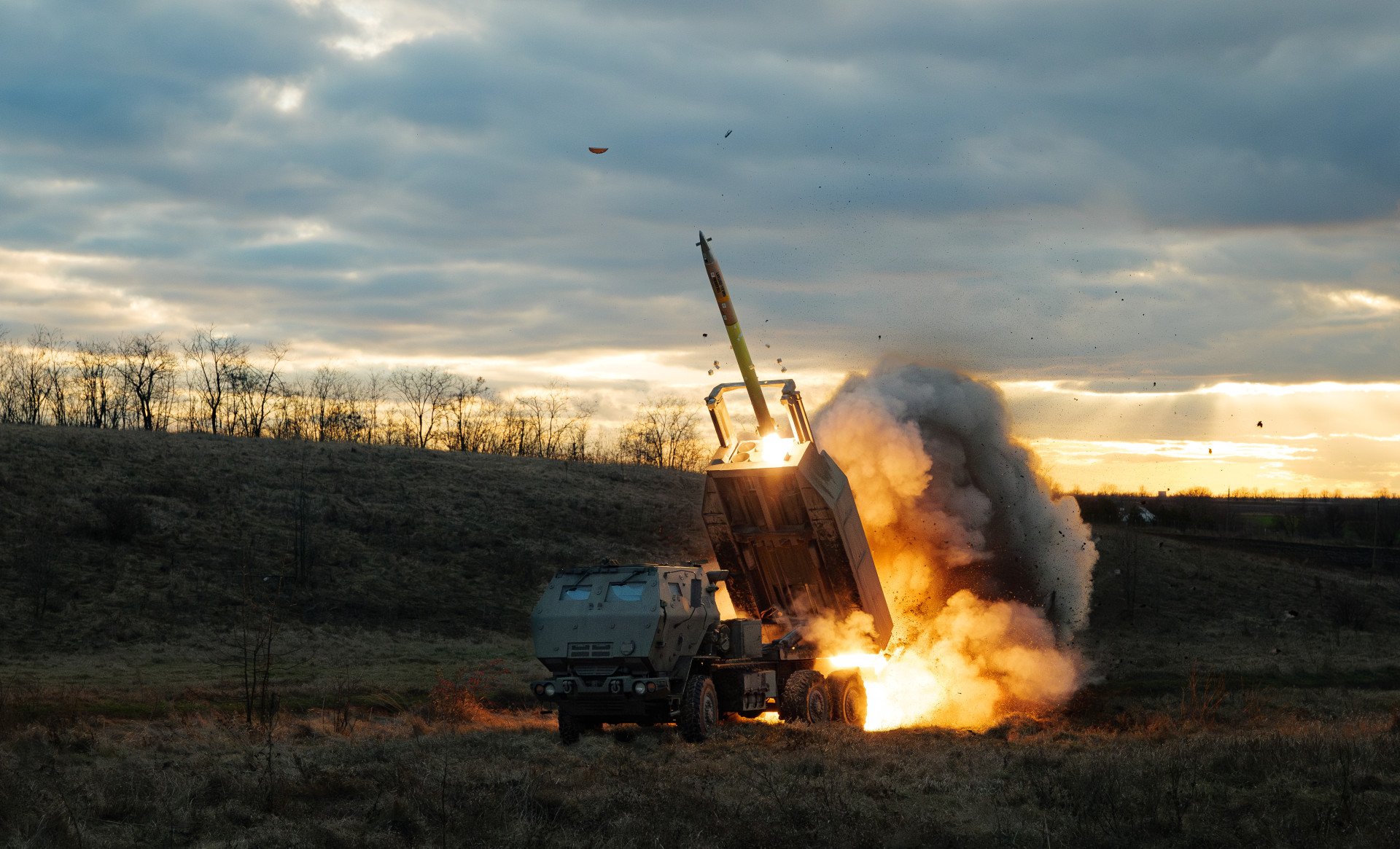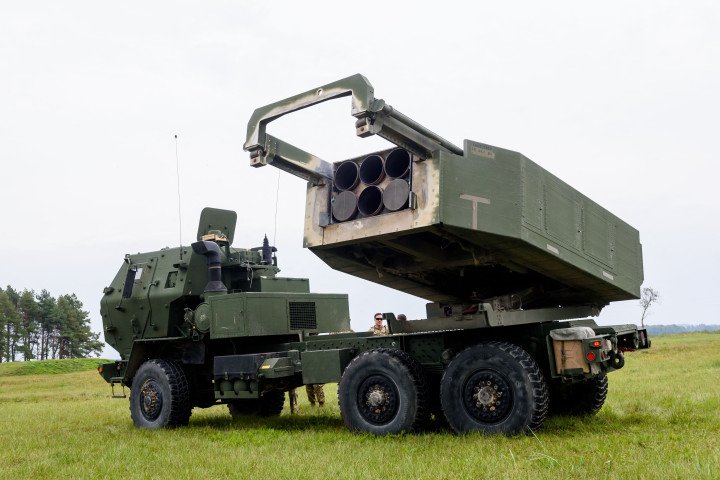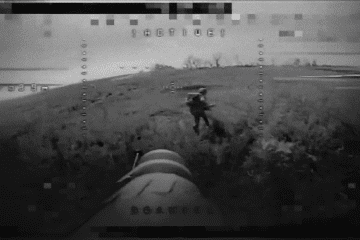- Category
- War in Ukraine
HIMARS, Ukraine’s Original Game Changer

Units in the Ukrainian army have been supplied with an estimated 40 HIMARS systems since they were first introduced in a May 2022 US military aid package. With over two years of service, Ukrainian HIMAR’s systems have caused a considerable problem for the Russians.
The maximum range of missiles fired from the HIMARS provided to Ukraine is 150 Kilometers or 93 miles. They give Ukraine the unique ability to strike deep into Russian-held territory and strike various targets like crucial infrastructure, ammunition warehouses, and command posts. Here we will go through some of the most remarkable achievements of the HIMARS system.
Lockheed Martin developed the M142 High Mobility Artillery Rocket System (HIMARS) in the mid-90s. It came into service with the U.S. Army in 2005 and was later exported to NATO allies – including Ukraine.
The concept behind the HIMARS system is quite straightforward: fire multiple high-precision missiles at the target from a safe distance, and leverage the vehicle's mobility by immediately hightailing it from the launch site.
This tactic has proven to be immensely successful against Russian occupational forces in Ukraine as it was in Iraq, Afghanistan, and Syria.
Crucial in Counteroffensive
In August of 2022, the HIMARS system had a crucial role in preparing the Ukrainian Armed Forces to liberate Russian-occupied Kherson. At that time there were only four launch systems given to Ukraine. They reportedly operated for 37 hours straight, collectively hitting strategic Russian 120 targets like ammunition depots, bridges, and command posts.
The repeated HIMARS strikes took away crucial Russian supply lines and depleted their stockpiles. Starving the enemy of supplies, allowed the armed forces to break through Russia’s defense lines and force a retreat. Throughout the missile campaign, the enemy had no answer to the American-made guided rockets.
The same can be said about the Kharkiv counter-offensive, where the Ukrainian armed focus pulled off one of the greatest slight of hands in military history. After months of publicizing a counter-offensive in the south, Ukraine quickly sent forces to the North and liberated all of the Kharkiv Oblast in a surprise attack. The mobility of the HIMARS system was crucial in the speed and effectiveness of the counterattack.
Russians should think twice about gathering in large groups
In 2022, a HIMARS strike targeted a Russian military camp in the Donetsk region, igniting a nearby ammunition storage facility. This resulted in one of the largest losses of life acknowledged by the Russian Ministry of Defense. Losses are estimated to be up to 400 people.
In 2023, There was another case of a large gathering of Russian troops near the line of contact, this time on Dzharylhach island in occupied southern Ukraine. The strike sustained over 200 casualties and significant equipment losses for the Russians.
In February of 2024, a large amount of Russian troops gathered on an empty field in occupied eastern Ukraine awaiting the arrival of a senior commander. Intelligence was sent to a HIMARS crew, which took the opportunity to wipe out two entire Russian companies of troops.
There are many of these cases documented online, and all of them, involve a certain amount of hubris on the part of the Russian armed forces. HIMARS can strike deep into Russia's rear, making any large gathering of the enemy a lucrative target.
Disruption of Russian Supply Lines
The presence of HIMARS immediately changed the way that Russian supplies reached the frontline. Large ammunition depots could sit close to the battlefield early in the war, but that’s no longer true. Russians were forced to leave valuable resources like fuel, ammunition, and artillery up to hundreds of kilometers behind the frontline.
This had a great effect on demoralizing under-equipped Russian soldiers, who had to wait for extended periods to receive replenishments. The existence of HIMARS and its range of up to 150km has also impeded Russia’s ability to push deeper into Ukraine, as supply lines are stretched thinly.
High efficiency - low vulnerability

The HIMARS system itself is a major target, many within the Russian military would pounce at the chance to find and destroy the system. Due to its high mobility and range, HIMARS is an incredibly elusive target. A crew can deploy, fire, and evacuate in a matter of minutes. However, this hasn’t stopped Russian media from claiming its destruction.
Russian forces have an arsenal of extremely expensive arsenal at their disposal, which includes surveillance and rockets. Ukraine’s 27th Rocket Artillery Brigade, the only unit that operates the HIMARS, constantly rotates the system across the country – making it very difficult to locate. On top of that, missions are mostly done under the canopy of darkness. Through two years of service, the Ukrainians have reportedly lost only one HIMARS.
HIMARS current impact
For much of the war, Russia exploited the policy of Western allies, who provided Ukraine with launch systems like HIMARS, by not allowing the use of these Western-made weapons on Russian territory. As a result, Russia strategically positioned significant amounts of air defense systems, artillery, and radars close to the border as they were effeectively shielded from Ukrainian strikes.
After Russia's 2024 winter campaign, during which its military attempted to retake the city of Kharkiv, Western allies, including the United States, reconsidered their policy. As Russian forces moved their artillery within range of Kharkiv, Western nations allowed Ukraine to target strategic sites within Russian territory, provided these targets were near the Kharkiv border and had significant military value.
Ukraine took out multiple Russian air defense systems, artillery, and radars with a barrage of HIMARS rockets after the US greenlit strikes inside of Russian territory. Now because of the rocket system, the Ukrainian Armed Forces have stabilized the Kharkiv region.


-f88628fa403b11af0b72ec7b062ce954.jpeg)
-b63fc610dd4af1b737643522d6baf184.jpg)


-29a1a43aba23f9bb779a1ac8b98d2121.jpeg)

-24deccd511006ba79cfc4d798c6c2ef5.jpeg)